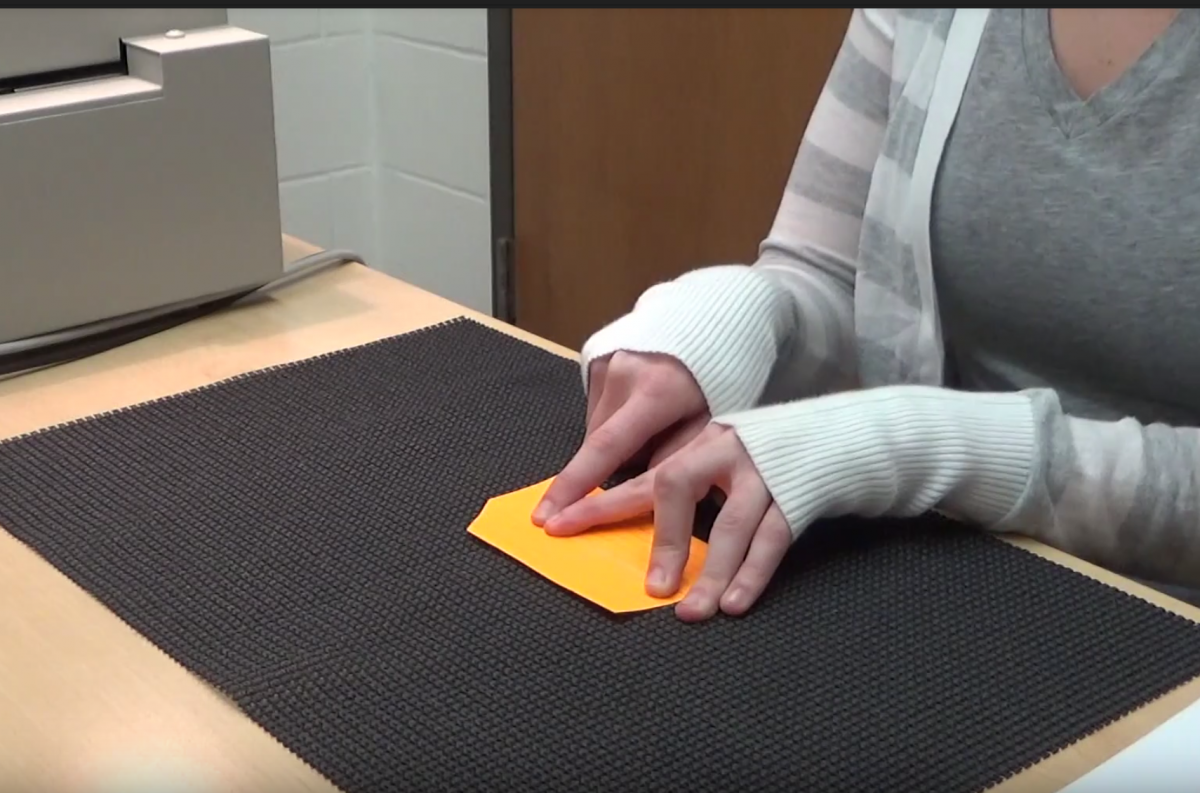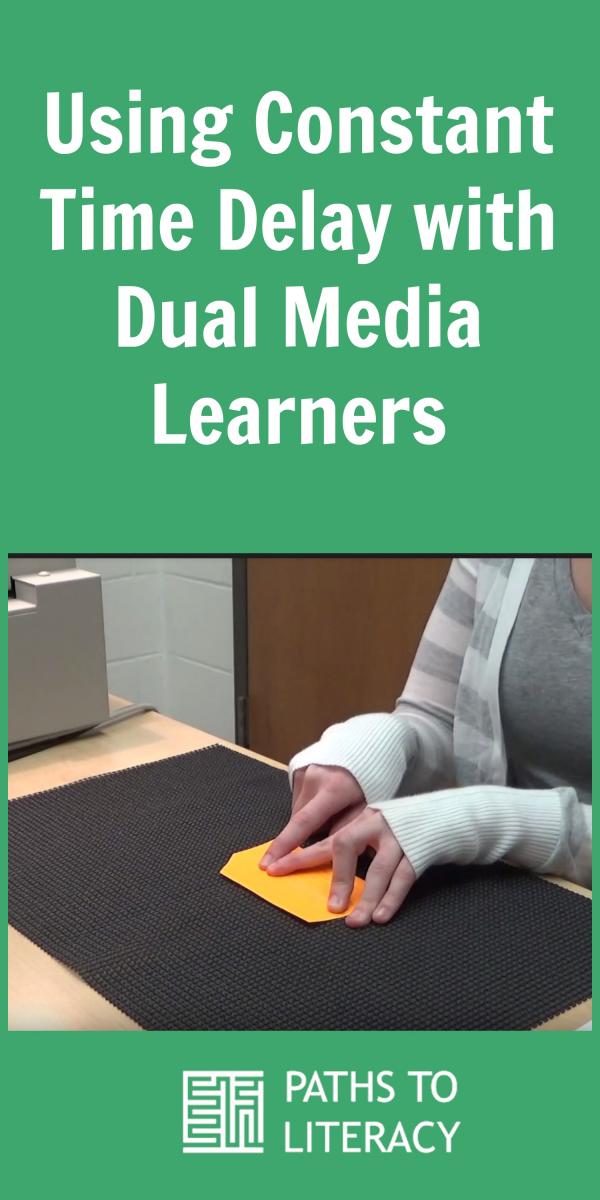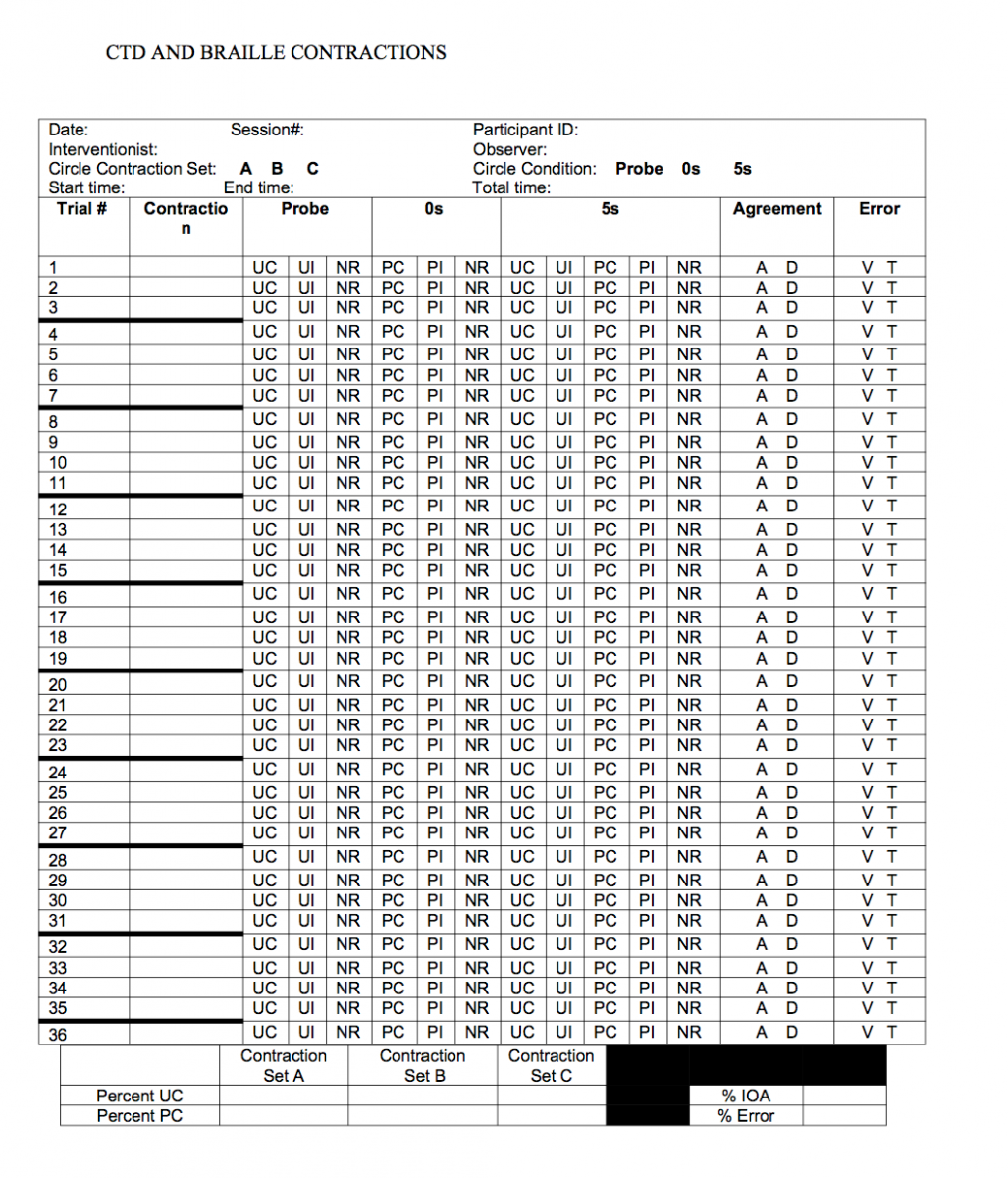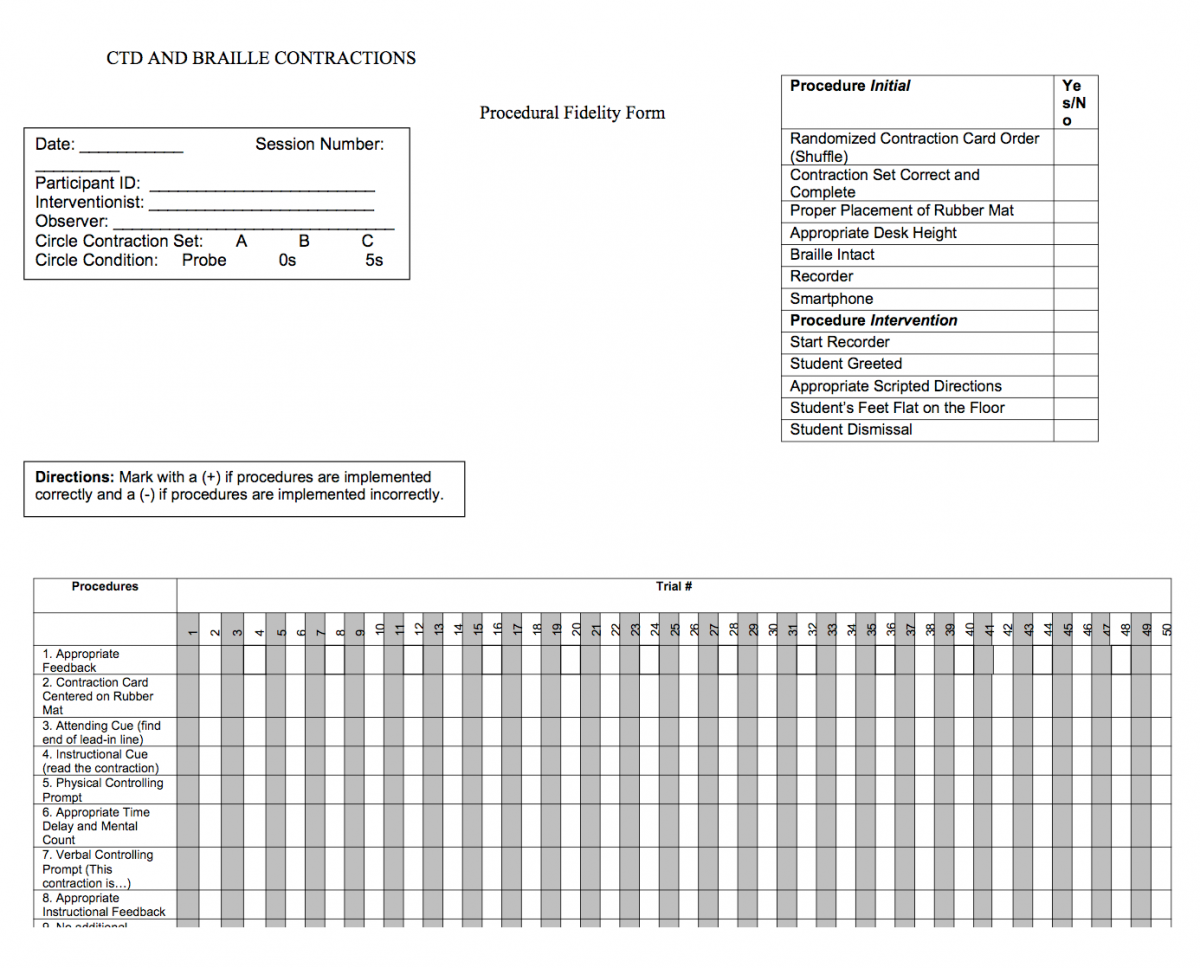Using Constant Time Delay with Dual Media Learners
 Constant time delay, or CTD, is a technique that has been shown to be an effective intervention strategy to teach braille contractions to dual media learners making the transition from print to braille. A research study was conducted at Vanderbilt University to examine the effectiveness of this strategy, and it was found to be successful in increasing the percentage of correctly-identified braille contractions for the four participants in the study. This article presents the highlights of the study, along with several video examples and forms that can be used to enable teachers of the visually impaired (TVIs) to implement this evidence-based instructional technique.
Constant time delay, or CTD, is a technique that has been shown to be an effective intervention strategy to teach braille contractions to dual media learners making the transition from print to braille. A research study was conducted at Vanderbilt University to examine the effectiveness of this strategy, and it was found to be successful in increasing the percentage of correctly-identified braille contractions for the four participants in the study. This article presents the highlights of the study, along with several video examples and forms that can be used to enable teachers of the visually impaired (TVIs) to implement this evidence-based instructional technique.
What Is Constant Time Delay and How Is It Used?
Constant time delay (CTD) is a systematic prompting procedure that uses explicit teaching of sight words, braille words or contractions on flashcards. The first step is to begin with an initial probe session to create a list of 15-2- unknown target words. This list is then divided into 3 or 4 word sets on individual flashcards that are taught separately. The learner is presented with the flashcard and the educator provides initial instructions, such as “Read the word”. This cue is followed by a model prompt saying what the word is, such as “This word is quick." When starting out, there is a 0-second delay between the initial directions (e.g. "Read the word.") and the model prompt (e.g.“This word is quick.") which is when the actual teaching of the word or contraction occurs.
In the sessions that follow, the educator introduces time delay, where the student is expected to read the actual word or contraction. In our study, we used a 5-second delay, but you can choose a time delay that is most appropriate for an individual student and his or her processing needs. CTD usually lasts between five and ten minutes, which means that it can easily be incorporated into a daily lesson or routine. CTD has been shown to be effective with students with additional disabilities, as well as dual media learners.
Video Examples of Using Constant Time Delay When Teaching Braille
Three videos and scripts are featured below, showing each of the steps of the Constant Time Delay instructional process: probe session, 0-second session, and 5-second session. Special thanks to Master's degree students Jennifer C. Johnston and Sarah F. Smith who made the videos!
Probe Session Video and Script
Introduction
“Today, I am going to show you some contractions. You probably won’t know a lot of these contractions and that is okay. If you don’t know the contraction you can just say “I don’t know” and we will move on to the next contraction. Do you understand? Let’s get started.”
Within Session
- Place the contraction card in front of the student on rubber mat.
- Orient the student to the mat and contraction card.
- Place hand over the contraction, and say the attending cue, “Find the end of the lead-in line.”
- Say instructional cue, “Read the contraction.”
- Begin 5 second mental count until the end of the trial
Probe Responses
- Unprompted Correct (UC) correct verbal, tracked before model prompt: “That’s right! Good reading!”
- Unprompted Incorrect (UI) correct verbal, but no tracking OR incorrect verbal tracked or untracked before model prompt: “Remember not to guess if you don’t know the contraction.”
- No response (NR) No verbal/tracked or untracked (if student looks at the contraction and has no response or says, “I don’t know”, or does not look at the whole contraction after instructional cue): “That’s okay, let’s look at a new contraction.”
Conclusion
"We are done for today. You did a great job! Thank you for reading with me!"
0-Second Delay Session Video and Script
Introduction
“Today I am going to show you some contractions. First I will read the contraction and then you can read it after me. Do you understand? Let’s get started.”
Within Session
- Place the contraction card in front of the student of the rubber mat.
- Orient the student to the mat and contraction card.
- Place your hand over the contraction and say the attending cue, “Find the end of the lead-in line.”
- Say the instructional cue, “Read the contraction.”
- Immediately say, “This contraction is [contraction].”
- Begin 5 second mental countdown until the end of the trial (waiting for participant’s response).
0-Second Responses
- Prompted Correct (PC): correct verbal, tracked after model prompt “That’s right, good reading!”
- Prompted Incorrect (PI): correct verbal, no tracking, OR incorrect verbal with or without tracking after model prompt “Remember to track the whole contraction.”
- No Response (NR): no verbal, tracked or untracked “Remember to track the contraction after me.”
Conclusion
"We are done for today. You did a great job! Thank you for reading with me!"
5-Second Delay Session Video and Script
Introduction
“Today I will show you some contractions. If you know the contraction, read it. If you do not know the contraction, wait, and I will read the contraction to you. Then you can read the contraction after me. Do you understand? Let’s get started.”
Within Session
- Place contraction card on mat.
- Orient the student to the mat and contraction card.
- When the student has found the contraction card, place your hand over the contraction and say, “Find the end of the lead-in line.”
- Say instructional cue, “Read the contraction.”
- Begin 5-second time delay.
- If participant does not respond, provide controlling prompt, “This contraction is[contraction].”
5-Second Responses
Before Model Prompt:
- Unprompted correct (UC): correct verbal, tracked before model prompt “That’s right! Good reading!”
- Unprompted Incorrect (UI): correct verbal, no tracking or incorrect verbal tracked or untracked before model prompt “Remember not to guess if you don’t know the contraction.”
After the Model Prompt:
- Prompted Correct (PC): correct verbal, tracked after model prompt “That’s right, good reading!”
- Prompted Incorrect (PI): correct verbal, no tracking, or incorrect verbal with or without tracking after model prompt “Remember to track the whole contraction.”
- No Response (NR): no verbal, tracked or untracked “Remember to track the contraction after me.”
Conclusion
"We are done for today. You did a great job! Thank you for reading with me!"
Data Collection Forms
These forms can be used to collect data and track progress on Constant Time Delay instructional sessions.
More Information
For more information, see also Using E-mail as Performance Feedback to Teach Paraprofessionals to Implement Constant Time Delay with Braille Words.



